Google Pixel 4 XL review: the big wait for software updates
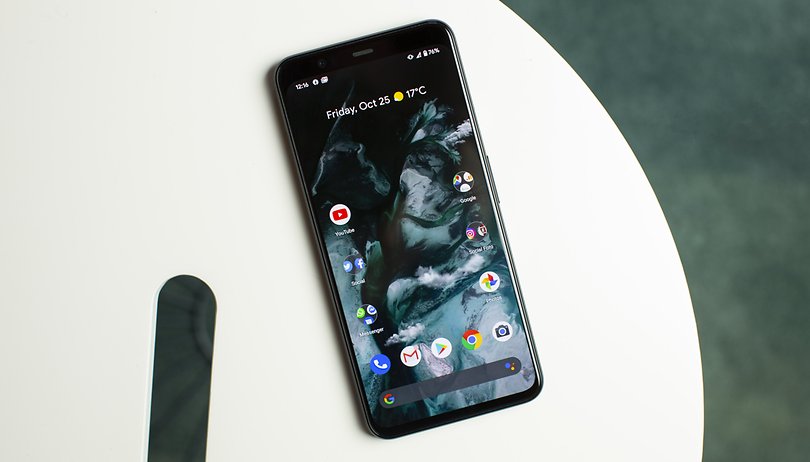

With the new Pixel 4 XL, Google leaves the paths of the previous Pixel generations. New design, a second camera, and instead of a fingerprint sensor only Face Unlock and a radar chip, which allows for motion control. Are these qualities that make this one of the best smartphones for 2019? Perhaps, if Google hadn't made too many questionable decisions.
Good
- Great camera
- Fast fluid display
- Pure Android
- Innovative Motion Sense
- Jagged Face Unlock
Bad
- Many functions are waiting for software updates
- Motion Sense still limited in use
- Battery life only satisfactory
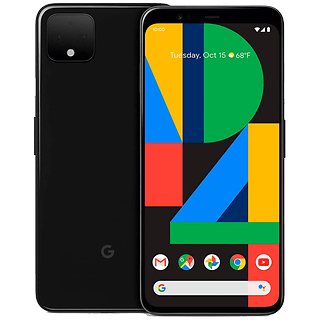
Google Pixel 4 XL release date and price
Google presented the Pixel 4 XL together with the smaller Pixel 4 on October 15 and started selling it within six days, so that both Pixel 4 devices have been on the market since October 21 and can be purchased today.
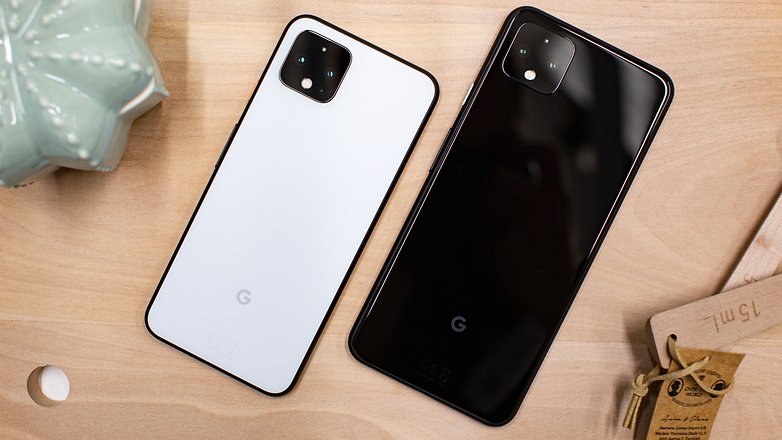
In terms of color versions, price and memory configurations, the Pixel 4 has the same stuff as its predecessor. While the Pixel 4 is offered in three colors, the Pixel 4 XL is only available in two colors and in the memory configuration of 6/64 GB or 6/128GB. In terms of price, the Pixel 4 XL is $899 and $999 respectively. Interestingly enough, Google has reduced the price of the XL versions by $50 each compared to the Pixel 3 XL.
Google finally adapts the design
With the introduction of the new Pixel generation, Google is giving its flagship Android smartphone a fresher look while also using a new format. Instead of continuing to use the wider 18:9 format, the Pixel 4 now uses the 19:9 aspect ratio. For everyday use, this means that the Pixel 4 XL sits well in the hand without a protective cover. Overall, Google Pixel 4 XL looks more modern and exciting than past Pixel smartphones.
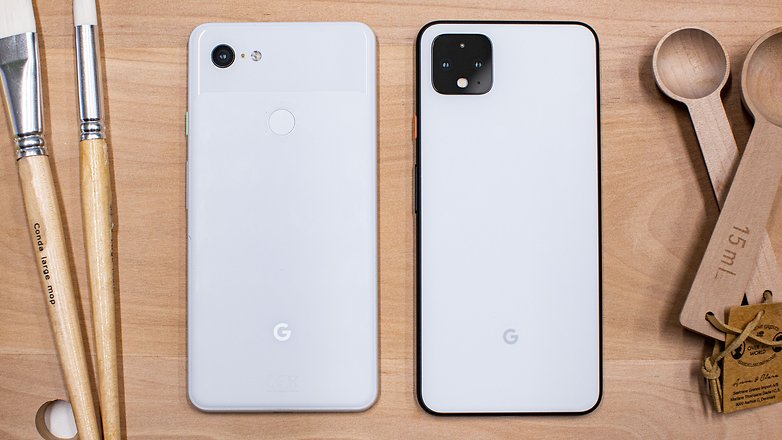
The grip of the Pixel 4 XL is also good thanks to the matt metal frame and the rear glass is no longer bent around the edges, but is now almost flush with the frame.
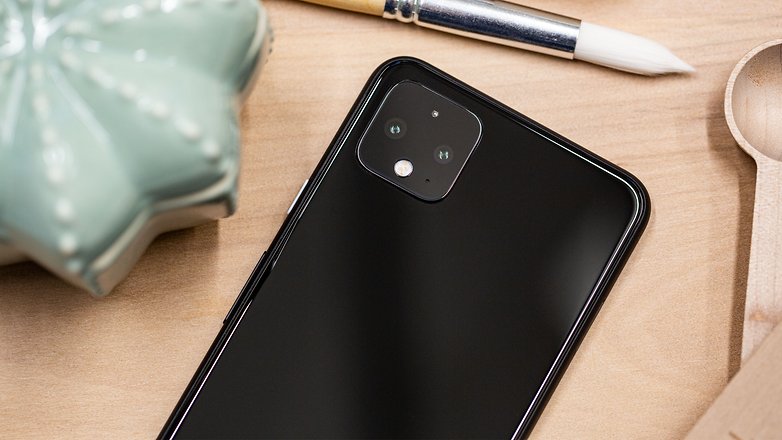
Google combines the new dual-camera in a square hump in which also the double LED flash and color sensor is located. Completely disappeared from the previous Pixel generations is the fingerprint sensor on the back. Google completely dispenses with it for the new Pixel 4 phones, as Apple did before with its iPhone X, and relies completely on Face Unlock.
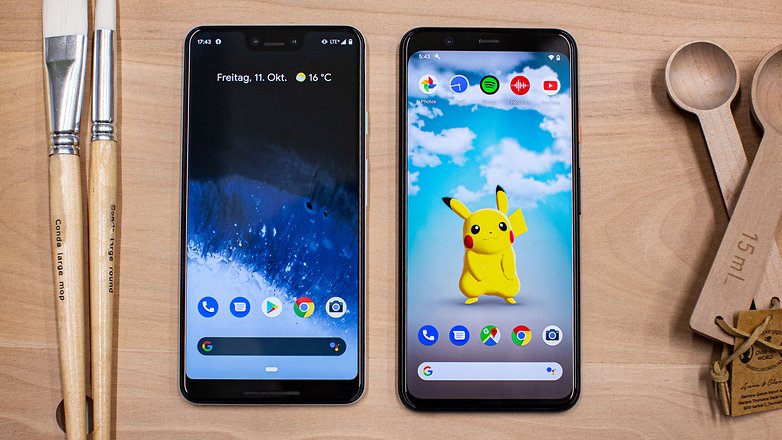
Face Unlock has not only left its mark on the back of Pixel 4 XL, but also on the front. The good news is that the massive notch of Pixel 3 XL is a thing of the past. The bad news is that Google is giving the Pixel 4 a wider "forehead" so that not only the Face Unlock technology but also the radar chip for Motion Sense tech must be integrated. In addition, the Pixel 4 unfortunately loses the second loudspeaker placed in the lower bezel of the display in the past. Instead, the Pixel 4 XL now fires the stereo sound from a downward speaker and from the conversation loudspeaker above the display.
In principle, there is no reason to criticize the build quality. As long as you don't press the volume buttons. These allow too much movement on our test model and give a shaky impression.
A high resolution and a (sometimes) fast display
In modern times, a display must not only be high-resolution, bright, high-contrast and energy-saving, but also have a high refresh rate to capture the hearts of smartphone users. The smooth display of the Google Pixel 4 XL has all the above-mentioned points, but the software still has some problems to tickle the optimum out of the hardware.
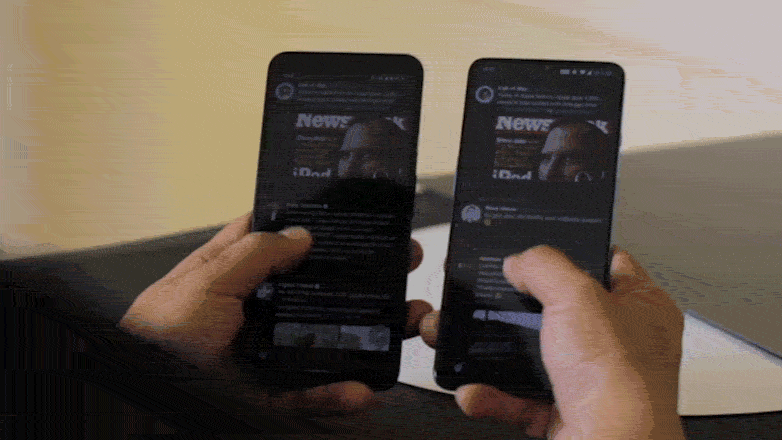
The 90 Hz liquid display was one of the highlights of Google Pixel 4 and the Pixel 4 XL tested here. Unfortunately, it turned out that as soon as the brightness drops below 75 percent, the smooth display suddenly only delivers a maximum refresh rate of 60 Hz. Google is aware of this circumstance and there will be an update to address this aggressive energy-saving measure, but it may take some time. Meanwhile, in the developer options, the Force 90 Hertz option can be used to permanently set the Pixel 4 display at the highest frame rate. But beware: this also affects battery life.
Overall, however, the display of the Pixel 4 XL is very good, only the automatic brightness control tends to reduce the display too much. This problem can also be solved with the help of software updates.
Google Pixel 4 XL special features
Finally there is something new and special about a smartphone. This does not mean the Face Unlock of the Pixel 4 XL, nor that the latest generation of the Pixel phone has a second camera, but the Soli Radar Chip and Motion Sense. The idea to use radar waves to control devices such as a smartphone originated from Google's ATAP unit and was groundbreaking. Not only for smartphones, but also for other product categories. These were shown off in a video five years ago about the advantages radar waves have over TOF sensors. Since pictures say more than words, you should have a look at the following video about the Soli Chip and its possibilities.
Even though five years have passed and Google, together with Infineon, has miniaturized the Soli Chip to such an extent that it fits into the Pixel 4 smartphones, the advantages shown in the video remain a dream. The Pixel 4 XL currently only accepts skipping music in YouTube music, Spotify and other audio players. In addition, it mutes the alarm clock and incoming calls with a swiping motion. The software API is unfortunately not yet available for app developers, so it could take even longer until more apps can be controlled via Motion Sense and the Soli Chip. When asked if there was already an approximate date for the opening of the API, Google only issued the info that it, unfortunately, does not want to share this publicly. Too bad. It also didn't want to comment on whether it was planned to use a mapping function for movements. Similar things exist, for example, for gamepads for Android smartphones to make app functions usable via Motion Sense.
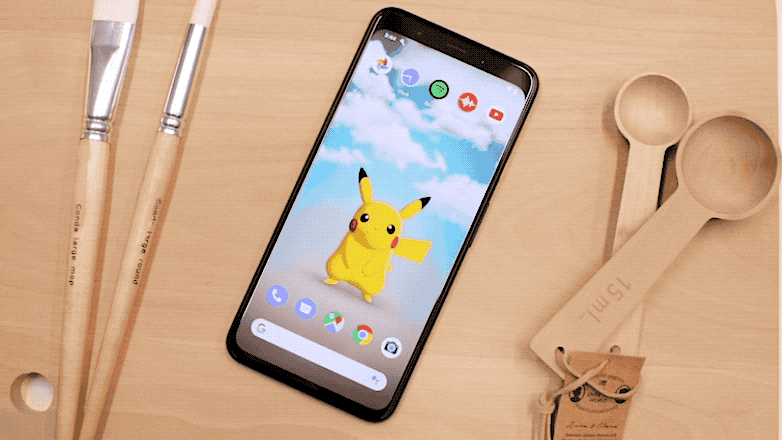
In addition to the current limitations, which can be lifted by software updates over time, there is another limitation that cannot be circumvented. In Japan, Motion Sense will not be usable, because apparently the Soli Chip must not be activated here. It is interesting to note that Google has confirmed to us that if you travel to Japan from abroad, Motion Sense will be deactivated upon arrival in Japan. Apparently the Soli Radar Chip is not allowed to become active in Japan at all and it also means that the Face Unlock on the Pixel 4 and 4 XL will not react as fast as in Japan. Google is also using Soli to get the hardware for Face Unlock out of standby, so that the smartphone can be used for history recognition and Pixel 4 can be unlocked as quickly as possible.
Android in its purest form
Google delivers the Pixel 4 with Android 10, naturally. Of course, there are a few software components that are specially adapted to the hardware of the Pixel 4 XL. Motion Sense, the new Face Unlock, a new revised camera app and a revised Assistant which is faster and slimmer. In addition, there is also an audio recorder that can convert spoken words into text while the recording is still in progress. The current version and the revised Assistant only understand English so far, but Google is also working on expanding its capabilities to other languages in the coming updates.
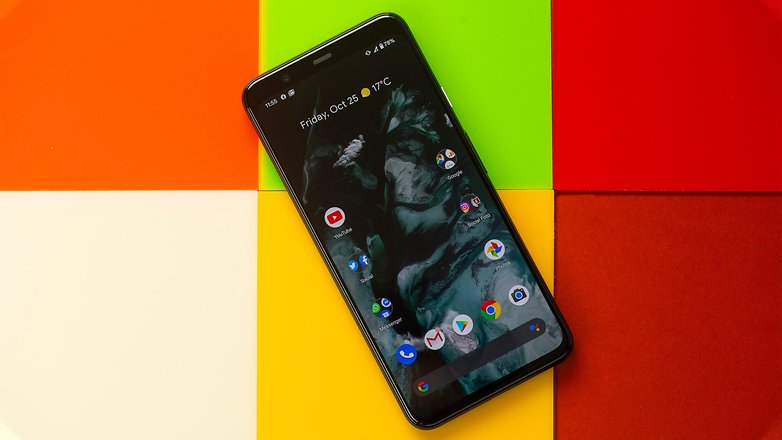
Basically, this is pure stock Android on the Pixel 4 and also on 4 XL and the associated fast and regular updates is one of the reasons why consumers choose a Pixel smartphone.
Google Pixel 4 XL performance
Software can certainly contribute a great deal to the smartphone's jagged or fluid operation. But the underlying hardware must also have the reserves to always be able to offer enough power in the long run. In the Google Pixel 4 XL, the search engine giant uses the same hardware as in its small sister model, the Pixel 4.
Google Pixel 4 XL benchmark comparison
| Samsung Galaxy Note 10 | Google Pixel 4 XL | OnePlus 7T | |
|---|---|---|---|
| 3D Mark Sling Shot Extreme ES 3.1 | 4.905 | 4.730 | 6.020 |
| 3D Mark Sling Shot Volcano | 4.146 | 3.988 | 5.245 |
| 3D Mark Sling Shot ES 3.0 | 4.872 | 5.042 | 6.649 |
| 3D Mark Ice Storm Unlimited ES 2.0 | 53.189 | 66.463 | 72.408 |
| Geekbench 5 (Single / Multi) | 704 / 2.283 | 614 / 2.409 | 786 / 2.825 |
| PassMark Memory | 19.730 | 27.509 | 32.960 |
| PassMark Disk | 73.145 | 75.859 | 50.068 |
The Pixel 4 XL is fast and powerful, as the benchmark comparison shows, but it is not as fast as the cheaper OnePlus 7T. Nevertheless, one can say that with the hardware Google has created a good device for the user that will still be fine in the 24 months' time. The fact that Google delivers the basic version of both Pixel 4 models only with 64GB of UFS 2.1 storage is a pity. For the price, Google could have started with a memory size of 128GB UFS 3.0 or 3.1 and offered a 256GB version as a top model.
Google Pixel 4 XL audio
The trend toward a higher screen-to-body ratio and a more modern look had Google say goodbye to the forward-facing speakers of previous generations. One of the two loudspeakers now radiates downwards out of the enclosure, which occasionally leads to it being covered by your hand. But otherwise, the sound quality and volume for a smartphone is good.
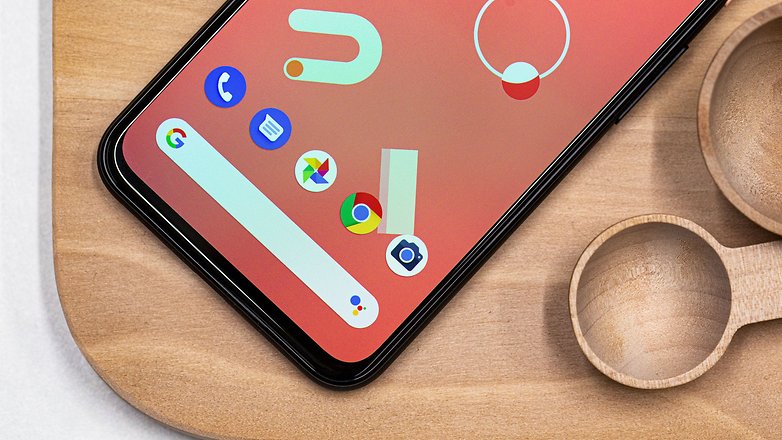
Google Pixel 4 XL camera
I had already reported extensively on the camera and the new functions such as dual exposure, astrophotography and the revised night mode in the hands-on test for the small Pixel 4. All the features that the Pixel 4 has, of course, the larger model also has. Together with our photo and video specialist Stefan I was in London and could experiment a lot with the camera. We noticed that with the Dual Exposure function, Google has already handed the post-processing of contrast and brightness, which one normally does as a photographer on the computer, before taking the picture. This shortens the processing time of the photos taken and makes it easier even for a beginner to create more effective and dramatic images.
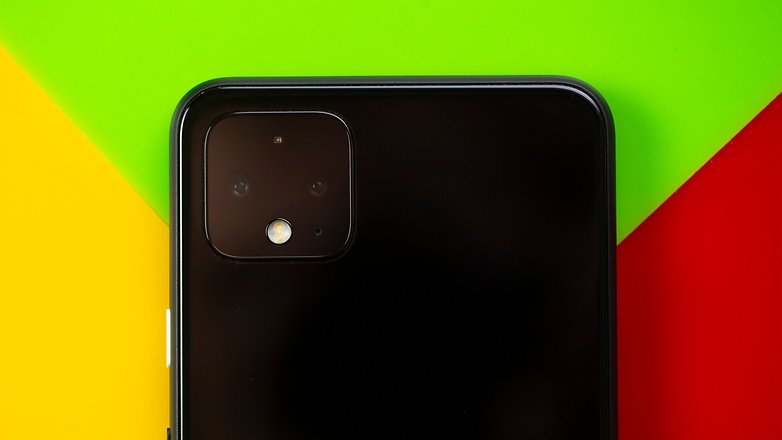
I consulted Stefan about the quality of the camera and had the following to say about the photos we took with the Pixel 4 XL:
Stefan: Daylight photos have not been a problem for smartphones for several generations. Correspondingly, the pictures taken with the Pixel 4 look rich in detail and are colorful. With intense red tones, typical HDR halo effects are sometimes noticeable, but this is a problem for most (even dedicated) cameras.

What is remarkable, however, is that Google continues to penetrate the low-light sector this year with Pixel 4. Especially under the typically dim lighting conditions that prevail in restaurants and bars, the quality is impressive - and should inspire the various Instagram foodies. Instead of unappetizing mud, there are still really appetising meals on the plate, even in nasty mixed light.

Finally, at night the Pixel 4 lets the HDR+ muscles work - and like the guys from the gym, Google exaggerates here too. Straight colored lights or intensive colors land unnaturally and overturned in the pictures. Sparsely lit offices in the skyline suddenly appear neon-green, and the Tower Bridge looks in places as if the Berlin Festival of Lights had just been invited to London.
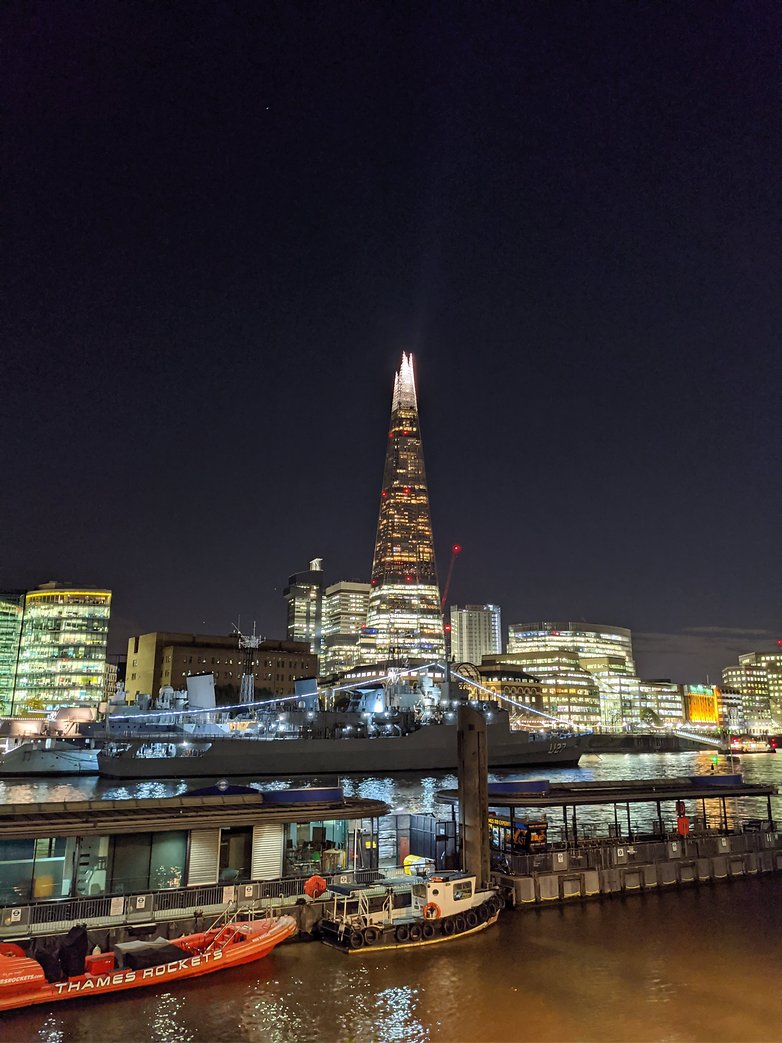
By the way, the panorama mode is no substitute for the missing wide-angle optics. With four megapixels, the resolution is too low not only on paper but also in practice. In addition, it looks as if the various image enhancers are not available for the panoramas - the results look dull and sad.

When it comes to videos, the Pixel 4 XL has good electronic stabilization, but unfortunately, there is no possibility to record 4K videos a 60 fps. It's a shame, especially if you look at the competition from Apple, Samsung and Huawei, which allow this and also add features like Super Slow Motion, Video-Bokeh and others to the camera. Google urgently needs to add to this, if necessary with a software update.
The problem with the Pixel
Oh Google, why do you give the Pixel 4 XL only this much battery? Ok Google, that's usually enough for the day, but if you want to enjoy all the new features such as Motion Sense, Face Unlock, the Smooth Display at 90 Hertz and now and then go on a photo safari, then this 3,700 mAh battery is not sufficient. Although the Google Pixel manages a full 10 hours and 34 minutes in the battery benchmark test, in reality it looks different.
The Pixel 4 XL typically ended a long working day during my test with a display on time between four and a half or just over five hours. I had also forced the display into the permanent 90 Hz mode in the developer settings, but then I only managed four hours and 20 minutes. If you want to force the Pixel 4 XL into longer battery life, then you have to switch off almost all features like Face Unlock, Motion Sense, Smooth Display and much more, but then you also lose the Pixel 4's charm. Too bad. Google, please include a larger battery in the Pixel 5 right away.
Google Pixel 4 XL technical specifications
Final verdict
Before the test I was full of euphoria for the Google Pixel 4 XL, but after a few days the euphoria decreased, as you may have already read in my opinion piece. Now that the review for Google Pixel 4 XL has been completed, I have to admit that the Pixel 4 XL is a consistently good smartphone. Google has made some very questionable decisions, including the telephoto camera instead of an ultrawide-angle camera and removing the ability to synchronize unlimited photos in their original quality in Google Photos, but it has managed to create a compelling smartphone camera with a touch of innovation. Now, only the numerous software updates are missing to make it even better. Maybe it's exactly this joy for upcoming updates that makes the Pixel 4 XL sexy again.





















Nice and informative articles, I am very glad to read these articles. Please keep posting and keep writing.
Definitely not worth the price who are they trying to fool. Poor storage options as usual especially for the price same old boring no frills handset every year. Midas well buy OnePlus
Way too expensive for what's offered. 800.00+ for the base model? A 2800mamp battery with a 90hz display? Only 64gb's on both models? No ultra wide camera? Nah, both are a hard pass!
Too expensive...NOPE